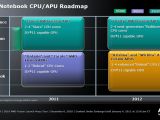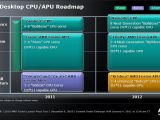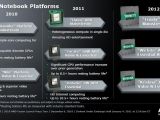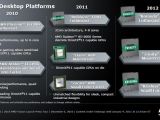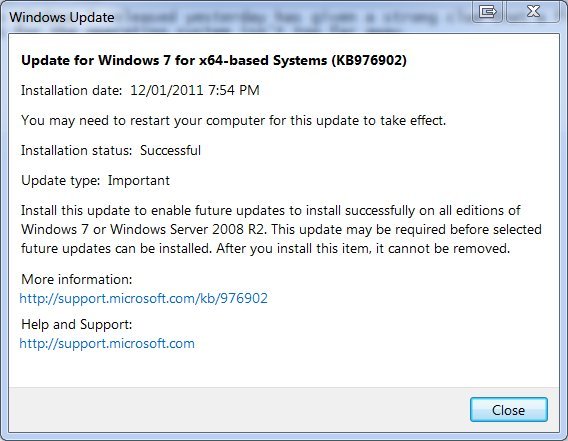 AMD’s award-winning ATI Catalyst graphics and HD video configuration software delivers unprecedented control of performance and visual quality with ATI Radeon™ graphics processors. Certified by Microsoft® Windows® Hardware Quality Labs (WHQL), ATI Catalyst drivers for Windows 7®, Vista® and Windows® XP operating systems deliver stable performance and push the limits of innovation with advanced user-oriented features.
AMD’s award-winning ATI Catalyst graphics and HD video configuration software delivers unprecedented control of performance and visual quality with ATI Radeon™ graphics processors. Certified by Microsoft® Windows® Hardware Quality Labs (WHQL), ATI Catalyst drivers for Windows 7®, Vista® and Windows® XP operating systems deliver stable performance and push the limits of innovation with advanced user-oriented features. This is the latest AMD’s industry leading software suite, Catalyst™. This particular software suite updates both the AMD Display Driver, and the Catalyst™ Control Center. This unified driver has been further enhanced to provide the highest level of power, performance, and reliability. The AMD Catalyst™ software suite is the ultimate in performance and stability.
Precision controls for power users. Tweaks for gamers and video enthusiasts. Simple wizard-assisted setup, easy multi-monitor configuration, and ultra reliable operation for working professionals. New user or seasoned expert, AMD Catalyst puts you in charge of The Ultimate Visual Experience™.
• Industry-leading performance. ATI Catalyst boosts graphics performance with every new monthly release, including enhancements for popular Direct3D and OpenGL game titles.
• Innovative and exciting features. ATI Catalyst includes the ATI Catalyst Control Center™, delivering innovative features and unprecedented control of performance and visual quality with ATI Radeon graphics.
• Robust stability. ATI Catalyst drivers for Windows Vista and Windows XP are Microsoft WHQL-certified, and include rigorously tested Linux drivers to deliver the industry’s most stable and reliable graphics performance.
The AMD Catalyst software suite 11.1 contains the following:
* AMD display driver version 8.812
* HydraVision™ for Windows XP, Windows Vista and Windows 7
* Southbridge/IXP Driver
* AMD Catalyst Control Center version 8.812
Caution: The Catalyst™ software driver and the Catalyst™ Control Center can be downloaded independently of each other. However, for maximum stability and performance AMD recommends that both components be updated from the same Catalyst™ release
Caution: The Catalyst™ Control Center requires that the Microsoft .NET Framework version 2.0 be installed. Without .NET version 2.0 installed, the Catalyst™ Control Center will not launch properly and the user will see an error message.
The latest version of the Catalyst™ software suite is designed to support the following Microsoft Windows platforms:
• Windows 7 32-bit version
• Windows 7 64-bit version
• Windows Vista 32-bit version
• Windows Vista 64-bit version
• Windows XP Professional
• Windows XP Home Edition
• Windows XP Media Center Edition
• Windows XP Professional x64 Edition
Release Notes
Download your selected driver from AMD website
Download Selected AMD Graphics Drivers & Software
• Industry-leading performance. ATI Catalyst boosts graphics performance with every new monthly release, including enhancements for popular Direct3D and OpenGL game titles.
• Innovative and exciting features. ATI Catalyst includes the ATI Catalyst Control Center™, delivering innovative features and unprecedented control of performance and visual quality with ATI Radeon graphics.
• Robust stability. ATI Catalyst drivers for Windows Vista and Windows XP are Microsoft WHQL-certified, and include rigorously tested Linux drivers to deliver the industry’s most stable and reliable graphics performance.
The AMD Catalyst software suite 11.1 contains the following:
* AMD display driver version 8.812
* HydraVision™ for Windows XP, Windows Vista and Windows 7
* Southbridge/IXP Driver
* AMD Catalyst Control Center version 8.812
Caution: The Catalyst™ software driver and the Catalyst™ Control Center can be downloaded independently of each other. However, for maximum stability and performance AMD recommends that both components be updated from the same Catalyst™ release
Caution: The Catalyst™ Control Center requires that the Microsoft .NET Framework version 2.0 be installed. Without .NET version 2.0 installed, the Catalyst™ Control Center will not launch properly and the user will see an error message.
The latest version of the Catalyst™ software suite is designed to support the following Microsoft Windows platforms:
• Windows 7 32-bit version
• Windows 7 64-bit version
• Windows Vista 32-bit version
• Windows Vista 64-bit version
• Windows XP Professional
• Windows XP Home Edition
• Windows XP Media Center Edition
• Windows XP Professional x64 Edition
Release Notes
Download your selected driver from AMD website
Download Selected AMD Graphics Drivers & Software
 Microsoft continuously improves Windows 7® and Windows Server® 2008 R2 by providing ongoing updates while working with software and hardware vendors to deliver application compatibility and hardware compatibility improvements. Service Pack 1 (SP1) is another vehicle through which Microsoft provides
Microsoft continuously improves Windows 7® and Windows Server® 2008 R2 by providing ongoing updates while working with software and hardware vendors to deliver application compatibility and hardware compatibility improvements. Service Pack 1 (SP1) is another vehicle through which Microsoft provides 